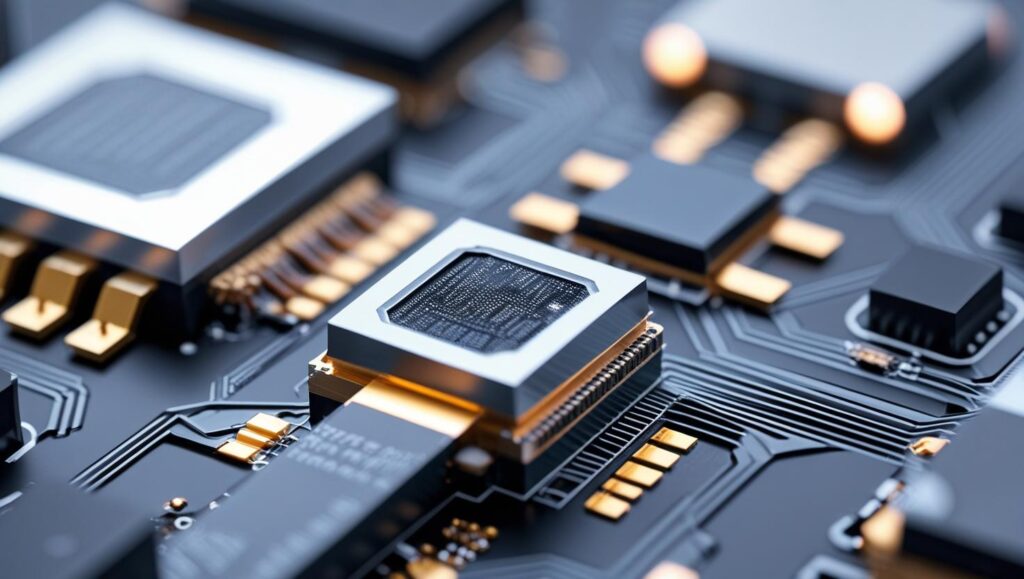The global piezoelectric devices market trends is poised for significant growth as industrial automation continues to transform manufacturing and other sectors worldwide. Piezoelectric devices, known for their ability to convert mechanical energy into electrical energy and vice versa, are becoming increasingly essential components in automated systems. This rising demand is driving key market trends and opening up new opportunities across multiple industries.
Growing Importance of Piezoelectric Devices in Industrial Automation
Industrial automation relies heavily on precision, reliability, and real-time responsiveness—attributes perfectly aligned with piezoelectric technology. Sensors, actuators, and transducers based on piezoelectric materials provide accurate motion control, vibration detection, and energy harvesting capabilities critical to modern automated equipment. As factories integrate robotics, automated inspection systems, and smart manufacturing solutions, the role of piezoelectric devices is expanding rapidly.
Piezoelectric sensors are widely used in condition monitoring, detecting changes in pressure, force, and acceleration to prevent equipment failures and optimize maintenance schedules. Meanwhile, piezoelectric actuators enable fine control of machinery parts, improving operational efficiency and reducing downtime. These applications underscore the growing importance of piezoelectric devices in advancing industrial automation.
The global piezoelectric devices market is expected to grow from USD 35.59 billion in 2024 to USD 55.49 billion by 2030 at a CAGR of 7.7% during the estimated period 2024-2030.
Key Piezoelectric Devices Market Trends
Several trends are shaping the piezoelectric devices market amid increasing industrial automation:
1. Integration with IoT and Smart Manufacturing
The rise of the Internet of Things (IoT) in manufacturing plants is driving demand for smart sensors that can communicate data in real time. Piezoelectric devices are integral to this ecosystem, providing critical feedback on machine health and operational conditions. Their small size, durability, and high sensitivity make them ideal for embedded sensor networks.
2. Advances in Material Science and Miniaturization
Ongoing research in piezoelectric materials—such as lead-free ceramics and polymers—is improving device performance while addressing environmental concerns. Additionally, miniaturization efforts enable the incorporation of piezoelectric components into compact, energy-efficient devices suited for modern automation systems.
3. Expansion Across End-Use Industries
While manufacturing remains the largest consumer of piezoelectric devices, other industries like automotive, aerospace, healthcare, and consumer electronics are increasingly adopting these components. For instance, piezoelectric actuators are used in automotive fuel injectors and aerospace vibration control systems, reflecting broadening market applications.
Download PDF Brochure @ https://www.marketsandmarkets.com/pdfdownloadNew.asp?id=256019882

4. Energy Harvesting and Sustainability Focus
Energy harvesting from mechanical vibrations using piezoelectric devices is gaining traction as companies seek sustainable power sources for wireless sensor networks in factories. This trend supports energy efficiency goals and reduces dependency on batteries or external power supplies, aligning with global sustainability initiatives.
Regional Outlook
Asia-Pacific is emerging as the fastest-growing region in the piezoelectric devices market, driven by rapid industrialization, government investments in smart manufacturing, and expanding automotive production. North America and Europe continue to lead in innovation, benefiting from established manufacturing bases and stringent quality standards.
Challenges and Opportunities
Despite the positive outlook, the market faces challenges such as high initial costs of piezoelectric systems and integration complexities in legacy industrial environments. However, ongoing technological advancements and decreasing component costs are mitigating these barriers.
For investors and manufacturers, focusing on developing customized piezoelectric solutions tailored to specific industrial automation needs presents significant growth potential. Collaborations between material scientists, device manufacturers, and industrial end-users will be key to unlocking new applications.
The increasing adoption of industrial automation is a powerful catalyst for the piezoelectric devices market. As industries worldwide seek greater efficiency, precision, and sustainability, piezoelectric devices are positioned to play an indispensable role in the next wave of manufacturing innovation. Keeping pace with piezoelectric devices market trends will be crucial for companies aiming to capitalize on this expanding opportunity through 2030 and beyond.
Investor FAQ: Piezoelectric Devices Market and Industrial Automation
1. What are piezoelectric devices, and why are they important for industrial automation?
Piezoelectric devices convert mechanical energy into electrical signals and vice versa. They are critical in industrial automation for precision sensing, motion control, and energy harvesting, enabling real-time monitoring and enhanced equipment efficiency.
2. How is industrial automation driving growth in the piezoelectric devices market?
Automation requires highly sensitive and reliable sensors and actuators for smart manufacturing, predictive maintenance, and robotic control. Piezoelectric devices meet these needs, making them increasingly vital as industries adopt automated systems.
3. What are the key market trends investors should watch?
Key trends include integration with IoT and smart manufacturing, advances in environmentally friendly piezoelectric materials, miniaturization of devices, expansion into automotive and aerospace sectors, and growing use in energy harvesting applications.
4. Which industries offer the best growth opportunities for piezoelectric device manufacturers?
While manufacturing leads, sectors such as automotive, aerospace, healthcare, consumer electronics, and renewable energy offer expanding opportunities, particularly as these industries adopt automation and smart technologies.